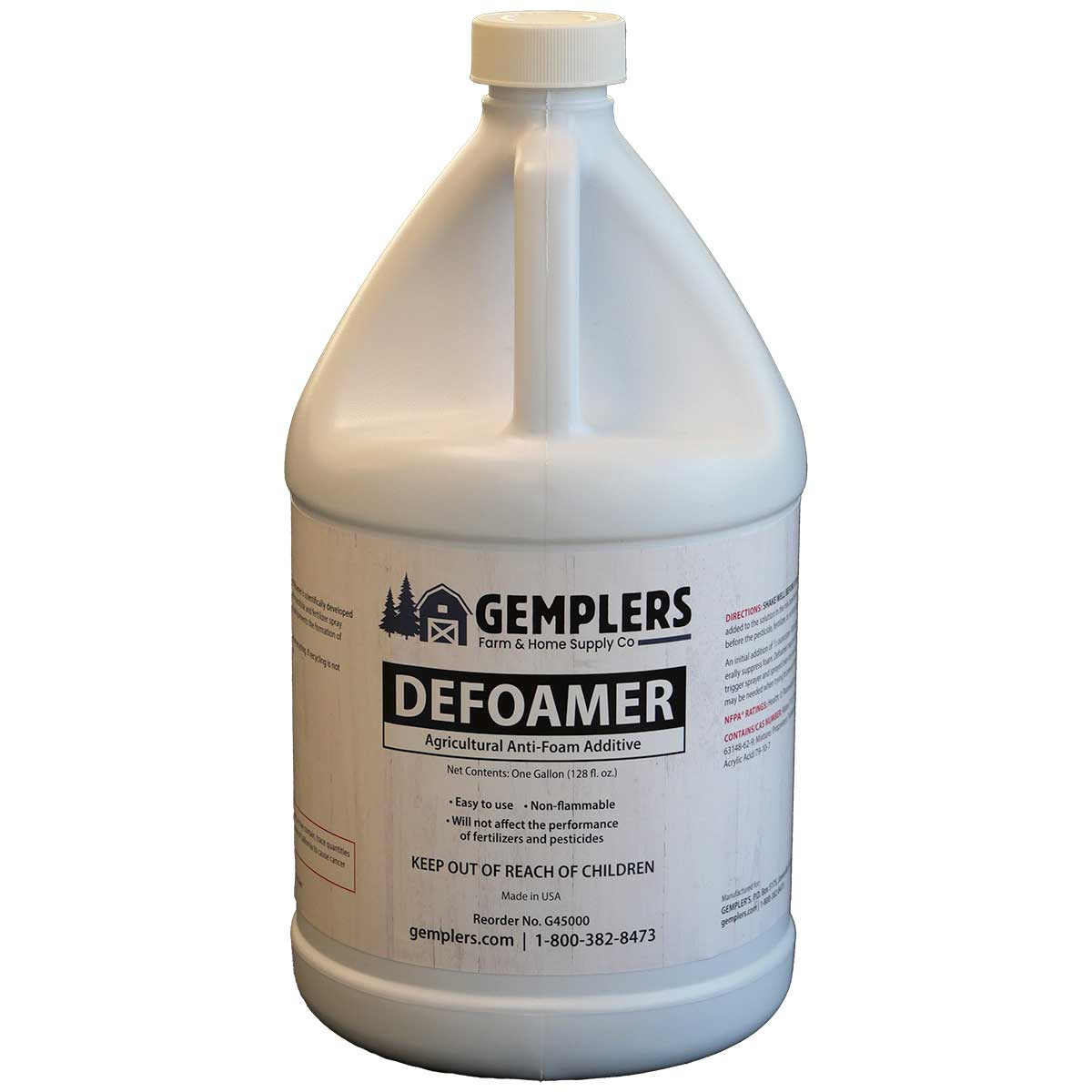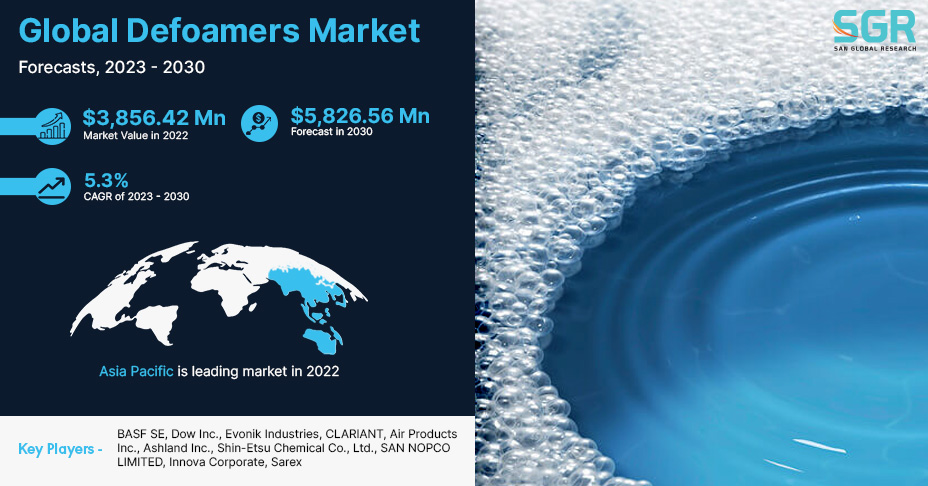Selecting the Right Defoamer for Your Details Application Needs
Picking the appropriate defoamer for specific application demands is a nuanced process that demands mindful factor to consider of several elements, such as the foam medium, operating, and kind problems. Recognizing the subtleties of defoamer performance-- including rate and determination-- while also representing environmental and regulatory aspects is critical. In addition, participating in trials and seeking advice from with makers can offer beneficial insights. Nonetheless, navigating these intricacies can be complicated, and the effects of an inadequate selection might be considerable. What methods can be employed to make certain an ideal choice?
Recognizing Foam Formation
Foam development takes place when gas is entraped within a liquid, producing a secure framework of bubbles. This phenomenon can considerably influence various industrial processes, specifically in fields such as food production, drugs, and wastewater treatment. The visibility of foam can prevent blending, decrease product high quality, and even bring about functional inefficiencies.
Foam generally develops because of a mix of aspects, including surface-active agents, anxiety, and the attributes of the liquid stage. Surfactants lower the surface stress of the liquid, facilitating the development of bubbles that can coalesce and stabilize. Agitation, whether from mechanical stirring or gas introduction, enhances bubble development, leading to increased foam volume.
Understanding the mechanics of foam formation is important for markets aiming to optimize their procedures. By determining the certain conditions that advertise foam generation, companies can execute strategies to mitigate its results. This knowledge prepares for choosing suitable defoaming agents that successfully target the distinct challenges postured by foam in various applications. A thorough understanding of foam formation is essential for boosting performance and preserving item stability across different industries.
Kinds Of Defoamers Available
Different kinds of defoamers are offered to resolve the challenges posed by foam in industrial applications. defoamers. Generally classified, defoamers fall under three groups: silicone-based, non-silicone-based, and all-natural defoamers
Silicone-based defoamers are renowned for their performance and stability throughout a vast array of temperature levels and pH degrees. They are normally made use of in applications where strong foam suppression is needed, such as in coverings, adhesives, and paints. Their reduced surface stress permits quick foam collapse.
Non-silicone-based defoamers, frequently made from natural substances, use a choice for applications conscious silicone deposits. These defoamers can be more separated right into polyether and ester kinds, each customized to fulfill details formula needs. Non-silicone defoamers are frequently used in food processing and individual care products as a result of their compatibility with numerous formulas.
Natural defoamers, stemmed from plant or pet resources, are obtaining traction due to their environmentally friendly profile. These products are particularly appealing in applications where regulative compliance and sustainability are critical, such as in agrochemicals and biotechnology.
Choosing the best kind of defoamer is vital for enhancing performance and guaranteeing compatibility with specific applications.
Key Application Factors To Consider
When choosing a defoamer, it is necessary to think about the particular application requirements to guarantee ideal performance. defoamers. Various markets have distinct needs, such as food handling, pharmaceuticals, or wastewater treatment, and each application may call for special defoaming buildings
Key aspects to examine include the tool in which the defoamer will be used, whether it is water-based, oil-based, or a mix thereof. The temperature and pH degrees of the application can also substantially affect the efficiency of a defoamer. Additionally, compatibility with various other chemicals present in the system is important to stop adverse reactions that could jeopardize performance.
An additional essential consideration is the frothing behavior of the certain system. Recognizing whether the foam creates quickly or gradually can guide the option of a defoamer that targets the root reason effectively. The desired rate of defoaming can affect the option, as some applications need fast activity while others may tolerate slower defoaming procedures.
Lastly, environmental and regulative considerations must not be overlooked, especially in industries with strict compliance demands. Picking a defoamer that aligns with these elements makes sure both look at more info effectiveness and safety in the application.

Efficiency Screening Methods
Evaluating the efficiency of a defoamer needs a systematic method to testing that properly gauges its efficiency in specific applications. Numerous efficiency testing approaches can be used to determine the ideal defoamer for a provided formulation.
One typical technique is the bubble test, which examines the defoamer's ability to decrease foam volume over time. This examination includes creating a secure foam and then adding the defoamer to observe the price of foam collapse.

Inevitably, picking the appropriate performance testing technique relies on the details application and the kind of foam being attended to. Each technique provides valuable information that can direct formula modifications and improve the effectiveness of the defoamer in useful applications.
Ideal Practices for Choice


Next, consider the defoamer's efficiency in terms of speed of activity and persistence. A quick-acting defoamer may be necessary for procedures where rapid foam suppression is essential, while a much more relentless formulation could be needed for prolonged foam control. Additionally, evaluate the ecological effect of the defoamer, including its biodegradability and any type of regulative compliance demands.
Conduct trials with picked defoamers to establish their performance in real-world conditions. This step is important to verify that the chosen item fulfills efficiency expectations. hop over to these guys Seek advice from with makers or providers for technical assistance and support, as they can supply important understandings right into product formulations and application strategies. By adhering to these ideal methods, you can boost foam control performance and make sure the longevity of your procedures.
Verdict
In summary, choosing the ideal defoamer demands a comprehensive evaluation of numerous aspects, including foam kind, tool, operating conditions, and ecological factors to consider. Comprehending the special qualities of foam formation and the readily available defoamer choices is important. Additionally, using effective efficiency testing techniques and sticking to ideal practices throughout the option process will boost the chance of accomplishing optimum defoaming outcomes. Ultimately, a knowledgeable choice strategy will deal with certain application needs and reduce foaming obstacles effectively.
Choosing the proper defoamer for particular application demands is a nuanced procedure that requires careful consideration of multiple factors, such as the foam get more kind, operating, and tool problems.Picking the appropriate defoamer is essential for achieving optimal efficiency in foam control applications. A quick-acting defoamer might be essential for procedures where fast foam suppression is vital, while an extra consistent formula could be required for long term foam control.In recap, choosing the proper defoamer necessitates a comprehensive assessment of various factors, consisting of foam type, tool, operating problems, and environmental considerations. Recognizing the special qualities of foam formation and the available defoamer alternatives is vital.